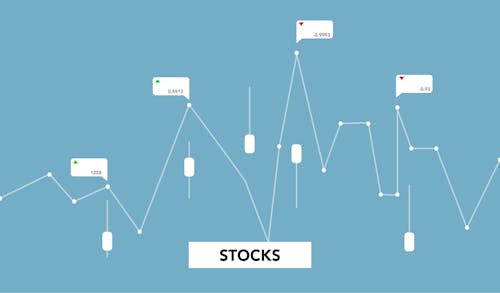European Stocks Decline As ECB Raises Rates And Signals More To Come

Image Source: Pexels
- European stocks mostly declined, with the Stoxx 600 down 0.3% and the German DAX down 0.1% after the ECB raised rates by 25 bps and indicated another increase in July.
- The ECB revised up their projections for core inflation and slightly lowered economic growth projections.
- The euro strengthened above $1.08, reaching a four-week high, following the ECB’s rate hike and indications of more to come.
- H&M reported weaker-than-expected sales for Q2 but expressed optimism for June.
- Media shares registered a modest gain driven by positive results from Informa.
- The German 10-year Bund yield approached the 2.5% level, reflecting market expectations and the ECB’s rate hike.
- The ECB confirmed the end of repurchases of securities from the APP and maintained TLTRO repayment conditions unchanged.
- The Federal Reserve kept interest rates unchanged but hinted at the possibility of future monetary tightening.
- Construction, materials, and banking sectors experienced declines, while media shares showed modest gains.
- Money markets priced in more rate hikes by the ECB, including a 25 basis point increase in July or September.
- The ECB’s decision to raise rates and revise inflation expectations increased upward pressure on European bond yields.
With the European Central Bank (ECB) continuing its series of interest rate increases while the Federal Reserve (Fed) opted to pause, the European market faces potential pressure. The euro currency has gained strength as the interest rate gap between the two central banks narrows.
The STOXX 600, which has risen by approximately 2% this month, may encounter selling pressure around the swing highs reached in January 2022. Currently, the market exhibits a balanced price range, and traders appear to rely on extremes to assess rotational scenarios. Buyers may target the highs for absorption purposes to conclude core short positions.
In terms of euro volatility, the median-term perspective indicates an upward trend. The euro has already risen by around 2.4% against the dollar, aiming to surpass the prior month’s highs. This could potentially result in the establishment of a balanced price range or a further surge driven by the tightening cycle.
Any indications from the Fed regarding additional interest rate increases may prompt sellers in the euro currency, while any signals of an earlier rate cut by the US central bank could drive the euro higher.
More By This Author:
Federal Reserve Maintains Rates But Hints At Potential Increases Later In The Year
US Stock Futures Decline On Fed Rate Expectations And Inflation Data
Gold: U.S. Inflation Data And Monetary Policy Decisions Awaited By Investors
Like this article? Learn more about the VWAP with trusted and premium educational market insights with a subscription.
Visit our more



